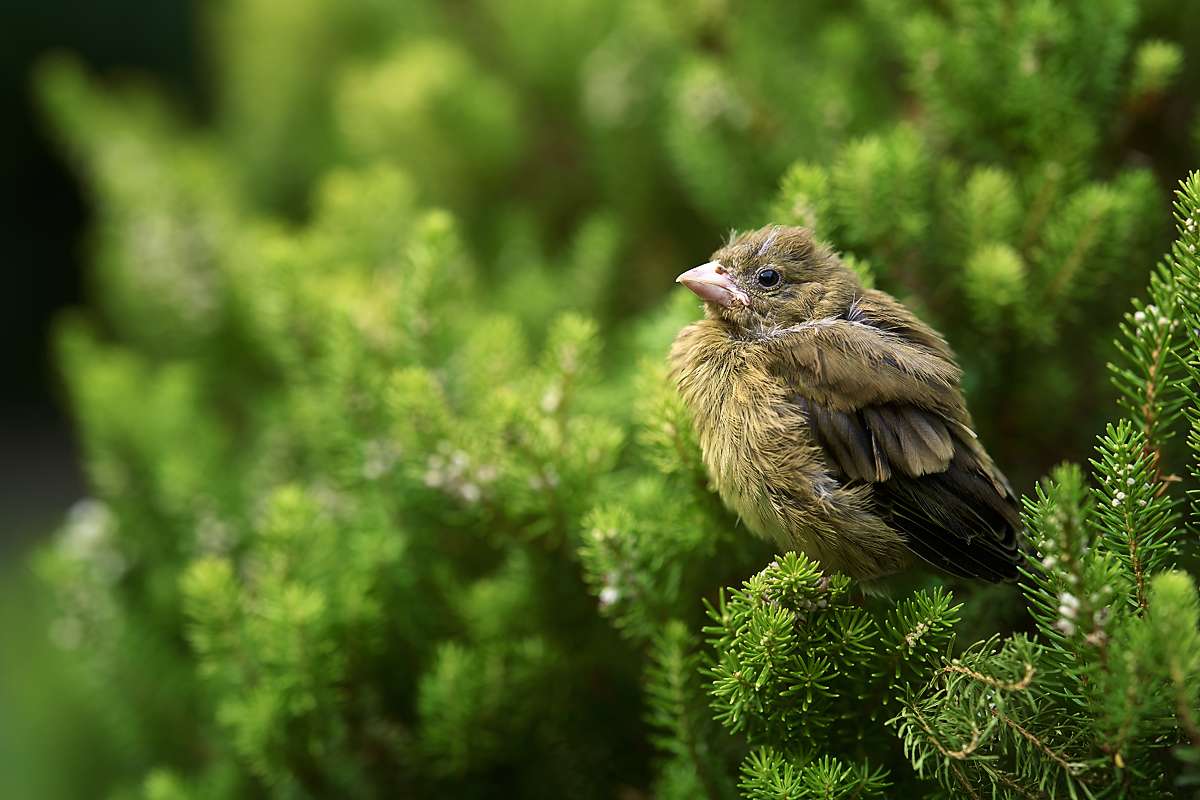Hand Raising an Abandoned Greenfinch Chick
This story started on a scorching Friday afternoon, August 2nd, 2024. Fran was in the garden when she spotted a dead Greenfinch chick under our Cherry Blossom tree. Just as she was taking it all in, she noticed something move about a foot away—a tiny chick, barely alive and looking really dehydrated, lying in the leaves. I carefully sprinkled some water on the little guy and decided to leave it alone, hoping its mother might return. Since it was in the shade, I figured it had a better chance if she did. Still, I wasn’t holding out much hope that it would survive the night.
The next morning at 6:30 am, I let Rio, our Border Collie, out into the garden and was surprised to find the Greenfinch chick still hanging on, though it looked really rough. I couldn’t decide—should I help or let nature take its course? In the end, I decided to give it a shot, even though I had no clue how old the chick was. From what I could find online, it seemed to be less than a week old, but I wasn’t even sure what kind of bird it was.
Determined to help, I jumped online to find tips on raising baby birds. I knew the food had to be something similar to what its mother would give it—probably regurgitated stuff. We made a paste out of freeze-dried dog food and baby food, feeding the chick every 30 minutes until about 8 pm that Saturday. Between feedings, we kept it in a small box with air holes and some kitchen roll for bedding, just hoping it would make it.


Sunday morning, before letting Rio out, I checked the box. The chick chirped—still alive and definitely hungry. On Monday, August 5th, I started looking for wildlife centers, but the nearest one was over 40 miles away. I didn’t know if the chick would survive the trip, and I couldn’t get through to anyone for advice, so I decided to keep doing what I was doing and learn as much as I could about hand-rearing a bird.
We stuck to the feeding routine for the next few days, but by late Wednesday afternoon, the chick seemed to be getting worse. I wasn’t sure it was going to make it. Thursday morning, I finally got some live mealworms, which I’d read were good for protein and hydration. I had to cut the worms in half so the chick could eat them, but by mid-afternoon, it started perking up. We switched to feeding it just mealworms every 30 minutes, and that seemed to do the trick.
Over the next few days, the chick’s feathers fluffed up, its colors became more vibrant, and it even started to stand and take tiny steps. By Sunday, August 11th, we’d kept the chick alive for over a week, and it was starting to take short flights, about two feet at a time, and perched on twigs we’d set up in a larger shoebox.
On Monday, August 12th, I started putting the chick outside on small bushes and branches in the garden. He began flying from spot to spot, taking naps in between, and I started calling him “Mr. Finch.” By late afternoon, Mr. Finch was flying longer distances around the garden, and then suddenly, he flew into a tree outside our yard. I couldn’t see or hear him, and while I hoped he was happy to be free, I worried he might not be ready. As dusk fell, there was still no sign of him, but there wasn’t much I could do.
The next morning, as soon as I let Rio out, Mr. Finch appeared, looking for food. I fed him at the bird table. Now, as I write this on August 15th, Mr. Finch comes and goes as he likes. I’m still feeding him mealworms about three times a day, and though he’s started nibbling on seeds, I think it’ll be a few more days before he’s fully independent.
This whole experience has been both tough and rewarding. I’ve learned a lot about raising a baby bird, and while I’m glad I could help, I hope I don’t have to do it again.



Where is Mr Finch now?
To be honest I have no idea, but I hope he is still alive and flying around enjoying life.